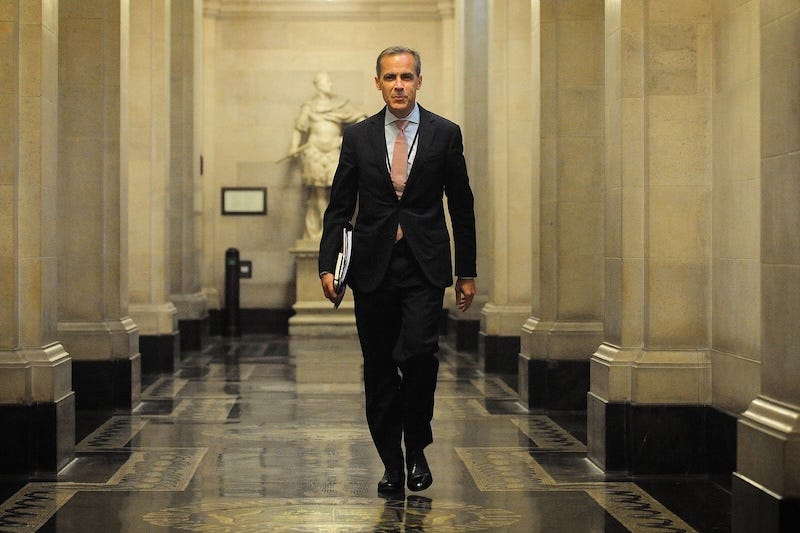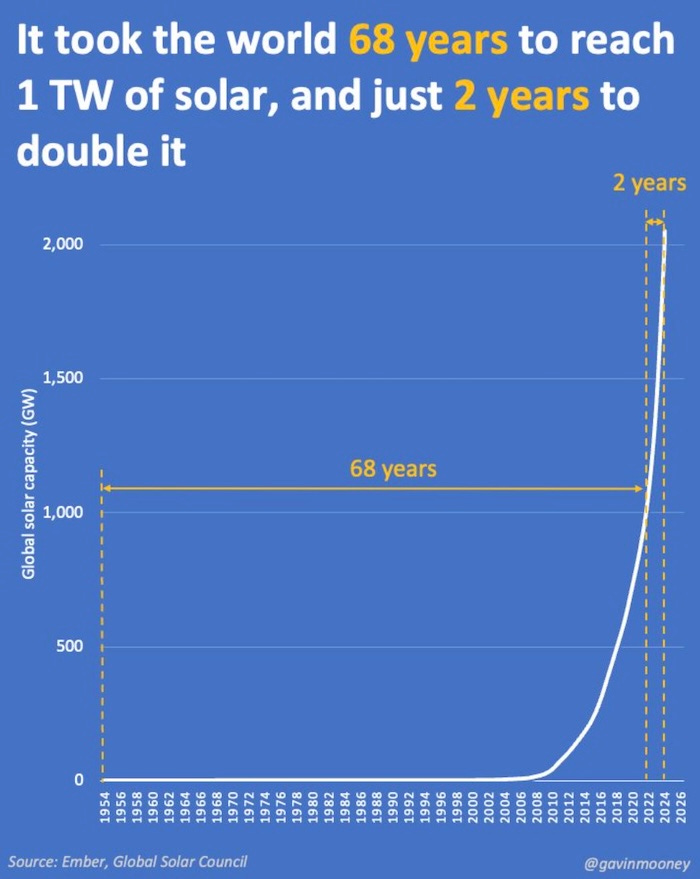A Least-Cost Energy Strategy Would Bring Carney’s Climate Policy Home
One question would point Prime Minister Mark Carney and his new cabinet to the answers they need on energy, affordability, and the community solidarity that will safeguard Canada’s sovereignty.
Prime Minister Mark Carney and his new cabinet took office Friday with some tough, momentous questions on their agenda, most of them pointing back to the rogue regime waging economic war on Canada from the White House.
But there’s one fairly easy calculation they or any future cabinet can make that will set them on track to addressing that challenge. Not least by tackling the domestic vulnerabilities that were driving us apart until Donald Trump’s latest round of rolling outrages pulled us back together.
What’s the cheapest, quickest way to deliver the reliable, affordable energy Canadians need, while boosting domestic manufacturing, driving down climate pollution, and restoring public confidence that our governments can actually deliver on their promises?
If our political leaders answered that question seriously and followed the evidence where it leads, it would bring them directly to the low-carbon energy path we laid out in last week’s Weekender:
• Drastically increasing the energy efficiency of everything;
• Replacing fuels with electricity across a large swath of the economy while decarbonizing the electricity system;
• Seizing the urgent opportunity to rapidly drive down methane emissions, whether or not fossil companies are serious about getting with the program;
• Pairing the rise of renewables and energy efficiency with a managed phaseout of oil, gas, and coal.
A least-cost energy strategy that factored in the fully-loaded cost of climate change would give us a lens for assessing every new pitch for Canada’s energy future—whether it’s a deep energy retrofit program, a local battery storage system, a solar or wind farm, a $100-billion nuclear megaproject, or the ridiculous demands for new pipelines in all directions, hatched by the fossil fuel industry and voiced by the former industry lobbyist they’ve since installed as Alberta’s premier.
Pretty much without exception, it brings us back to low-carbon options that are practical, affordable, ready to scale up, and won’t either fry the planet when used as directed or saddle us with eons’ worth of dangerous nuclear waste.
For bonus points, it connects us to a burgeoning global clean energy economy—at just the moment when we’re looking to diversity our exports beyond one risky, unreliable trading partner.
And just as important, it takes us past the disconnect between statement and action—between the “what” and the “how” of government policy on climate, affordability, and everything else that matters. That gap has cut across all the major political parties for the last decade and quite rightly sapped public confidence that anything much will ever get done.
WWCD? (What Would Cabinet Do?)
All of which leads to the next important question that we can hope to see the political parties address on the campaign trail over the next few weeks:
WWCD? (What would Cabinet do?)
With the horse race polls tightening ahead of an election that may be called at any moment, it’s a question that applies to either of the parties with a chance of forming the next government. As Climate Action Network Canada said in its response to Friday’s announcement:
Prime Minister Carney’s new cabinet may be short-lived, but the climate crisis—with its economic impacts larger than those of the tariffs—requires all hands on deck. As Canadians face the effects of climate change and their impacts on affordability, climate action must be a priority for all departments, all parties, and all levels of government.
Here are some early guesses on how this particular cabinet might connect climate and energy back to the trade, sovereignty, and affordability issues that are sure to preoccupy Ottawa for the foreseeable future.
• Mark Carney, Prime Minister: You probably know the pedigree by now: Central banker x2, widely credited with sparing Canada from the worst effects of the 2008 economic crash and helping the UK navigate through Brexit. A “boring guy” with a “volcanic temper” from whom Trump “should not expect too much flattery”. Voice of the September, 2015 “tragedy of the horizon” speech that introduced climate change to bankers as a threat to international financial stability, former United Nations special envoy for climate finance, instigator of an ambitious though ultimately cosmetic effort to pull the global banking sector into the climate fight, chair of a green energy investment powerhouse that is still taking heat for its holdings in fossil fuels. Carney’s pronouncements so far have focused largely on strengthening the economy, getting infrastructure built, and moving bigger and faster than we ever thought possible. (@SethKlein, we’re taking side bets on where he may have discovered that idea.) It remains to be seen what kind of infrastructure he has in mind, but it’ll be hard for him to get behind new fossil fuel or nuclear megaprojects without abandoning the aura of economic realism behind the near-heroic reputation he’s built to date.
• François-Philippe Champagne, Finance Minister: Dubbed “Canada’s closer” by Politico in 2023 during his term as industry and innovation minister, Champagne earned nicknames like “Energizer Bunny” and a reputation for never letting go when he took on the task of building up Canada’s electric vehicle and battery supply chains. In his analysis of the swearing in, Globe and Mail columnist Adam Radwanski called Champagne’s appointment “the most telling of Mr. Carney’s attempts to speed up the way things work in Ottawa—and potentially the most consequential, if he gets a chance to actually govern after the election he is about to call.”
Champagne “is not necessarily the person to put in that job for deep soul-searching about the future of the Canadian economy, amid a trade war with the United States and a crumbling international order,” Radwanski wrote. Instead, the new finance minister brings “an unusually energetic and transactional management style that, unlike many of the colleagues who served alongside him in [former prime minister Justin] Trudeau’s cabinet, is less about plan-making than about follow-through.”
If what Radwanski calls Champagne’s “dog-with-a-bone mentality” can clear the widely-reputed cobwebs and obstacles in the federal finance department, it may be a welcome relief from a largely performative government that hired a high-priced UK consultant to advise it on “Deliverology”, but in the end couldn’t even deliver on that.
• Mélanie Joly, Minister of Foreign Affairs: Joly has been in the eye of the storm responding to Donald Trump’s economic warfare, delivering a brilliantly tough, substantive defence of Canadian sovereignty and values that had veteran CNN anchor Christiane Amanpour declaring that “my jaw is dropped”. Climate change doesn’t appear to have been a central priority for Joly in her 3½ years as foreign minister. But some of her recent statements have flagged the impacts of climate change in a rapidly-warming Arctic and pointed to the year-by-year increase in forest fires as an issue for Canada to confront alongside other countries.
• Dominic LeBlanc, Minister of International Trade and Intergovernmental Affairs: Like Joly, LeBlanc will spend most of his time on the front lines of the fight against Trump’s senseless trade war. A second-generation cabinet minister from New Brunswick, he has close ties to the Irving oil and natural resources dynasty. But local observers see LeBlanc as a team player and deal-maker who will follow whichever political winds bring economic gains to his home province. These days, that agenda may include New Brunswick’s biggest wind farm, and LeBlanc was also a major proponent of the ill-fated Atlantic Loop clean electricity transmission project.
• Anita Anand, Minister of Innovation, Science and Industry: Just hours after she was appointed to her new portfolio, veteran cabinet minister Anand asked businesses that have received billions of dollars in federal funding to switch their sourcing to Canadian steel and aluminum producers. “It’s the latest Buy Canadian effort as relations with the United States erode,” the Globe and Mail reported. In an interview with CBC’s Rosie Barton, Anand said the federal government is now on a “wartime footing”. In her previous role as Treasury Board president, she framed green procurement as “a key part of building a resilient, sustainable economy.”
• Chrystia Freeland, Minister of Transport and Internal Trade: As finance minister and deputy prime minister under Trudeau, Freeland is widely recognized as a smart, experienced, committed political operator. She was also generally understood to be a leading obstacle to pushing ambitious climate dossiers through cabinet. As internal trade minister, she’ll presumably have a lot to say about interprovincial clean electricity deals like the longstanding, common sense plan to supply hydroelectric power from Quebec to Ontario.
• Jonathan Wilkinson, Minister of Energy and Natural Resources: A cleantech executive before he entered politics, and a solid voice for renewable energy in the Trudeau cabinet, Wilkinson has most recently raised some common sense concerns about the latest round of fossil-generated hype for new pipelines.
“Everybody’s sort of running around saying, ‘Oh my God, we need a new pipeline, we need a new pipeline,’” he told the Globe and Mail, in an interview that would have been on the public record before Carney finalized his re-appointment to the energy portfolio. “The question is, ‘Well, why do we need a new pipeline?’ And I think it’s important to have the conversation, but let’s start with facts.”
Beginning, presumably, with whether anyone would actually want the job of constructing it. “If there's an economic case, you would assume there's a proponent, and the proponent will build it,” Wilkinson said around the same time, in an interview with CBC. But with the companies that originally pitched the Energy East and Northern Gateway megaprojects no longer in the oil pipeline business, and no avid advocate on the horizon, “people are jumping to a solution before they've actually talked through the challenges,” he added. “One is, is there an economic case for such a pipeline? And the second is, is there a national security rationale?”
• Steven Guilbeault, Minister of Canadian Culture and Identity and Parks Canada: Guilbeault needs no introduction to Weekender readers as the former environment minister who received a 39-point to-do list in his mandate letter from Trudeau in 2021. After years of championing a succession of climate regulations against relentless attacks from the fossil industry and its supporters, Guilbeault’s new portfolio allows him to focus more on nature and biodiversity, as he’s been doing in many of his recent announcements.
• Terry Duguid, Minister of Environment and Climate Change: Duguid served as chair of the Manitoba Clean Environment Commission before he ran for office, and is credited as the guiding hand behind the creation of the Canada Water Agency. He’s seen as a strong pick for the environment and climate portfolio, and might be particularly amenable to the argument that climate change is largely about water in all the wrong places.
• Nate Erskine-Smith, Minister of Housing, Infrastructure and Communities: Erskine-Smith was widely seen as the leading voice for climate and energy solutions in the 2023 Ontario Liberal leadership campaign, placing second to then-Mississauga mayor Bonnie Crombie. As The Energy Mix reported exclusively last month, Erskine-Smith told the Sustainable Communities Conference in Fredericton that “elections matter”, warning municipal officials that a quarter-century of progress on local climate and sustainability initiatives could be at risk in this year’s vote.
The Masks Are Off
In a welcome letter coordinated by Ecojustice, 57 Canadian organizations and individuals urged the new PM to heed his own testimony on Sen. Rosa Galvez’ proposed Climate-Aligned Finance Act. In May 2024, Carney advised parliamentarians to turn away from the “negative impact of Canada’s slow progress in building a sustainable financial system on investment, job creation, and competitiveness of our economy” and create a “virtuous circle of large-scale investment, faster decarbonization, more jobs, and faster growth.”
Less than a year later, two powerful forces—both of them, sad to say, unleashed by Trump—make those words even more important than they were then.
• Many international leaders know the energy transition won’t stop for Trump. The European Union’s Clean Industrial Deal is meant to sustain the continent’s commitment to the energy transition and at least somewhat keep pace with China’s massive lead in clean technology development. When Carney talks about adopting a carbon border adjustment mechanism—essentially a tariff on high-carbon products—alongside like-minded countries, bear in mind that the EU is where the world’s first CBAM was introduced.
• Among the countries and businesses that were only performatively committed to the energy transition, the masks are off. Over the last week, the Financial Times has reported oil and gas CEO and COP28 President Sultan al Jaber’s statement that “it’s time to make energy great again”, while Saudi Aramco CEO Amin Nasser enthused that “we can all feel the winds of history in our industry’s sails again.” That prompted John Kerry, now retired and unleashed from his position as the Biden administration’s climate envoy, to declare that Aramco is on the “wrong side” of that history.
• Meanwhile, our friends at Climate & Capital Media report that BlackRock CEO Larry Fink, author of the annual “Larry’s Letters” that sang the praises of corporate social responsibility and climate disclosure, is now happily embracing “energy addition” has he builds up his firm’s investments in natural gas, coal, and liquefied natural gas exports.
In a cascading, global climate emergency, the good news here is obviously more welcome than the bad. But at very least, it’s easier to sort out where things stand, with the talk getting more real and more countries and regions that are not the United States moving from declarations to implementation. That may set the stage for a prime minister like Mark Carney to help bring climate and green industries back toward the centre of the international conversation, very specifically as a way of advancing Canadian sovereignty and diversifying our trading relationships.
That will depend, of course, on the results of the next federal election. But if a Carney cabinet gets a chance to set any policy at all, it’ll be hard to go wrong with a least-cost energy strategy at the centre of its thinking.
Mitchell Beer traces his background in renewable energy and energy efficiency back to 1977, in climate change to 1997. Now he and the rest of the Energy Mix team scan 1,200 news headlines a week to pull together The Energy Mix, The Energy Mix Weekender, and our weekly feature digests, Cities & Communities and Heat & Power.
Chart of the Week
Ontario Slaps 25% Surcharge on Power Exports as U.S. Commerce Secretary Vows More Tariffs
Canada Pours Nearly $450M Into New Nuclear Subsidies
Advocates Push to Ditch Gas Amid Soaring Prices in Ontario, B.C.
Power-Hungry Data Centres Force Rethink on Grid Planning
Tariffs Likely to Crater Canadian Crude Exports to U.S., Marathon Tells Investors
EU Shifts Climate Dollars to Military Spending as Trump Upends U.S. Foreign Policy
Wind-Powered Cargo Vessel Aims for 80% Emissions Reduction on Maiden Voyage
Norway Will Let Cities Introduce Zero-Emission Zones
Quebec Battery Plant in Doubt as Parent Company Declares Bankruptcy in Sweden
North American pipeline company warns Trump tariffs will hit fuel prices (Financial Times)
Strong Demand for U.S. Clean Energy Tax Credits Continues Into 2025 (Reunion)
€4.2B to support 77 cutting-edge decarbonization projects for EU’s clean energy transition (European Commission)
Avangrid Plans to Invest $20 Billion in US Grid until 2030 (Rigzone)
Data center capacity is soaring, along with investment and land use (PV Magazine)
With Texas facing soaring electricity demand, the politics of energy quietly shift at the Capitol (Texas Tribune)
Battery breakthrough as 99.99% of lithium extracted from old cells (The Independent)
Once a high-profile emitter, Port of Belledune, NB wants to be a green energy hub (CBC News)
Climate Change Made South Sudan’s Heat Wave 10 Times as Likely, Study Finds (New York Times)
Amazon forest felled to build road for climate summit (British Broadcasting Corporation)
Yukon fire chiefs say use of expired protective equipment is at 'crisis level' (CBC News)
Rankin Inlet hunter thankful for rescue after snowmobile sinks into ice (CBC News)









Interesting article. There's another person: Anita Anand, the new minister of Innovation, Science and Industry. Aside from the Canada Infrastructure Bank, this is the federal ministry where the new $$ for green technology development is likely to come from. For example, there's the Strategic Innovation Fund (SIF) and the associated Net Zero Accelerator (NZA) fund that at one point was $8-billion for technologies to meet emissions targets.
Many thanks for this, Susan -- I should have looked to Anand and her new department. I'll aim to track down details over the next couple of days.